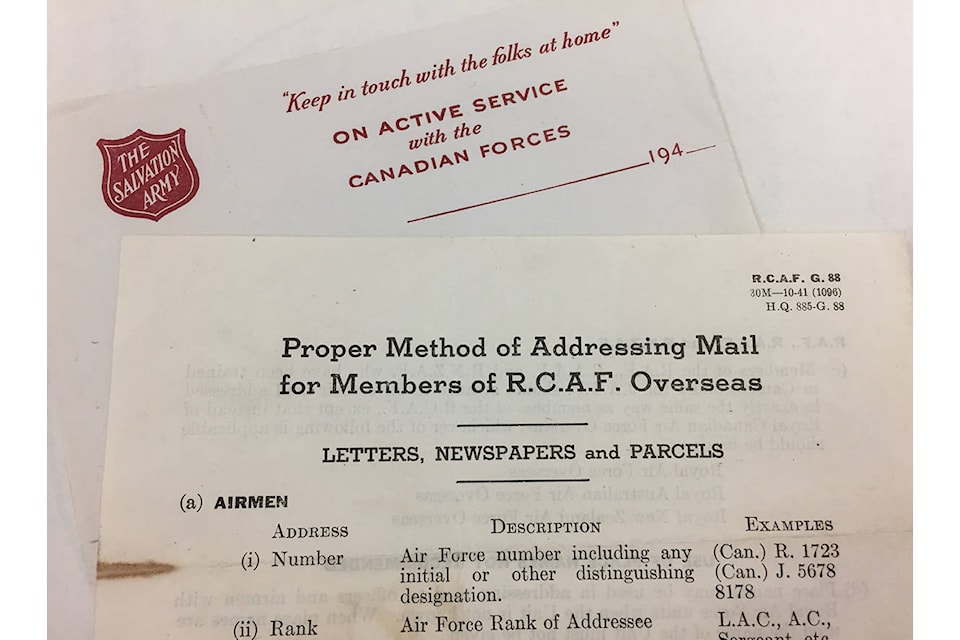Carol Popkin
Special to Black Press
Although the history of the very first care package is uncertain, we do know that the sending of Christmas care packages to military members serving overseas dates back to at least the First World War.
Care packages might have been the only means of celebrating the holiday season for Canadian men and women serving out of their country during the war.
Leading up to the Christmas of 1914, the teenage daughter of Britain’s King George V, Princess Mary, hoped to supply each soldier serving overseas with a gift from the British people. She created the Soldiers and Sailors Christmas Fund and sought donations from the public.
The response from the public was quick, and soon enough money was raised to supply each service person with a brass, embossed box which held a Christmas card or, if delivered after Christmas, a New Year’s Card; a photo of Princess Mary; for smokers, tobacco, cigarettes, a pipe and lighter; and for non-smokers, sweets and a bullet pencil.
All servicemen on the front line, nurses and soldiers in hospitals or on leave qualified for this package. The contents of the packages varied somewhat such as nurses receiving chocolates while Indian troops received spices and sweets.
The tradition of care packages carried on to the Second World War, when numerous organizations such as the Canadian Red Cross provided care parcels for prisoners of war. The Canadian Red Cross played an immense role in supporting POWs and their families. Countless volunteers created food parcels, and approximately 16.5 million of these parcels were shipped overseas.
According to a post-war study, the Canadian parcel was the preferred one to British, American, or New Zealand-issued parcels, claiming that the Canadian parcels had “greater bulk’” “lasted longer,” and/or had “more food.” These care packages not only consisted of food but other items such as first aid supplies, cigarettes, toiletries, and diaries.
The Colwell Diary, housed in the main gallery of the Comox Air Force Museum, recounts daily life in the POW camp, Stalag Luft III, and was written in a YMCA diary received as part of one of these POW care packages.
Today, the tradition of care packages continues through the Comox Military Family and Resource Centre. These care and morale packages are greatly appreciated during the holidays, and are also welcome throughout the year. Charitable donations are accepted and can be directed to specific programs. For more information about donations or morale packages, please contact the Comox Military Family Resource Centre via email at deploymentservices@comoxmfrc.ca
To discover west coast RCAF history and heritage, visit the Comox Air Force Museum located at the corner of Ryan Road and Military Row. The museum will be closed from Dec. 23 to Jan. 2, reopening at 10 a.m. on Jan. 3.
Carol Popkin is the program manager & volunteer co-ordinator at the Comox Air Force Museum
